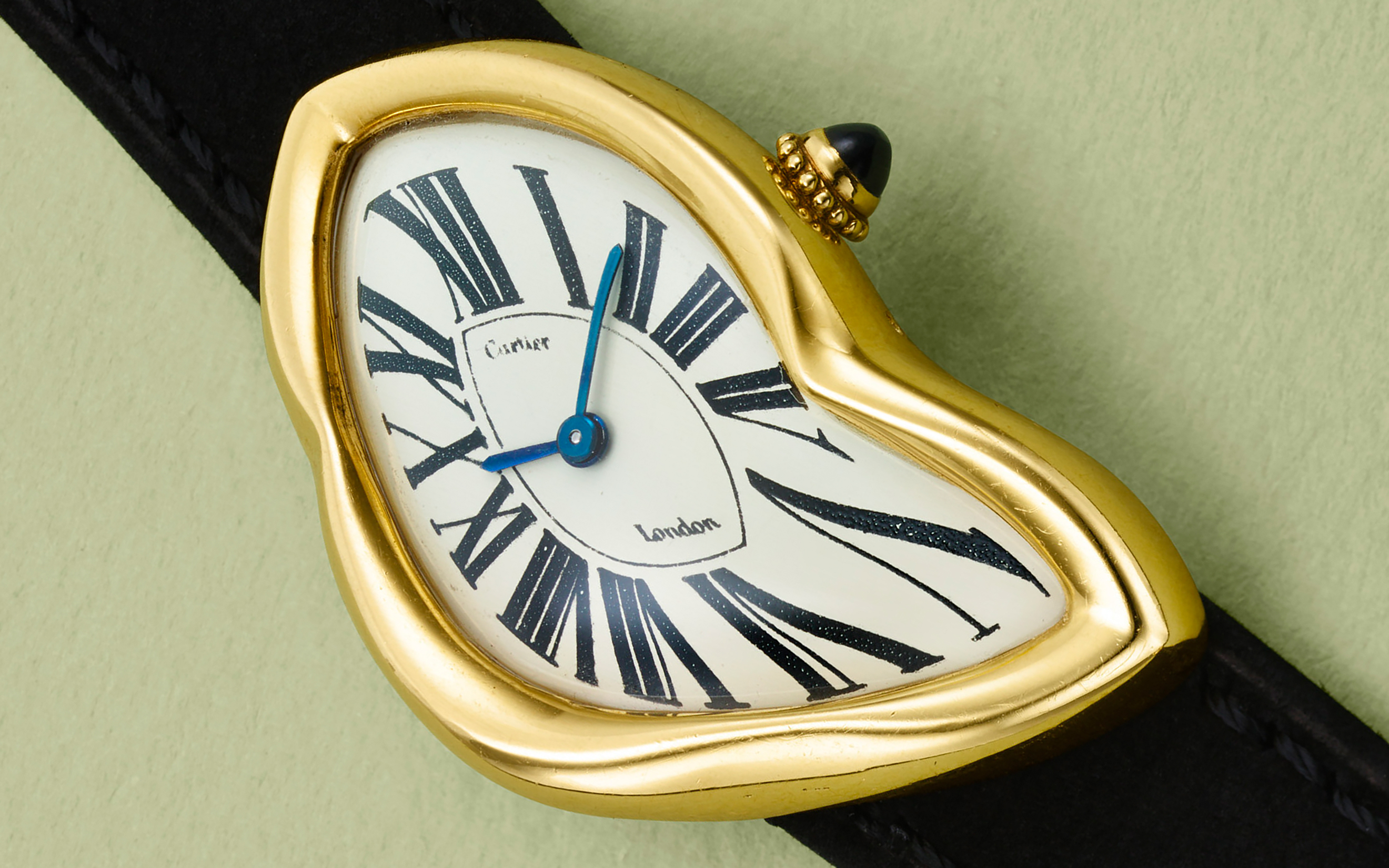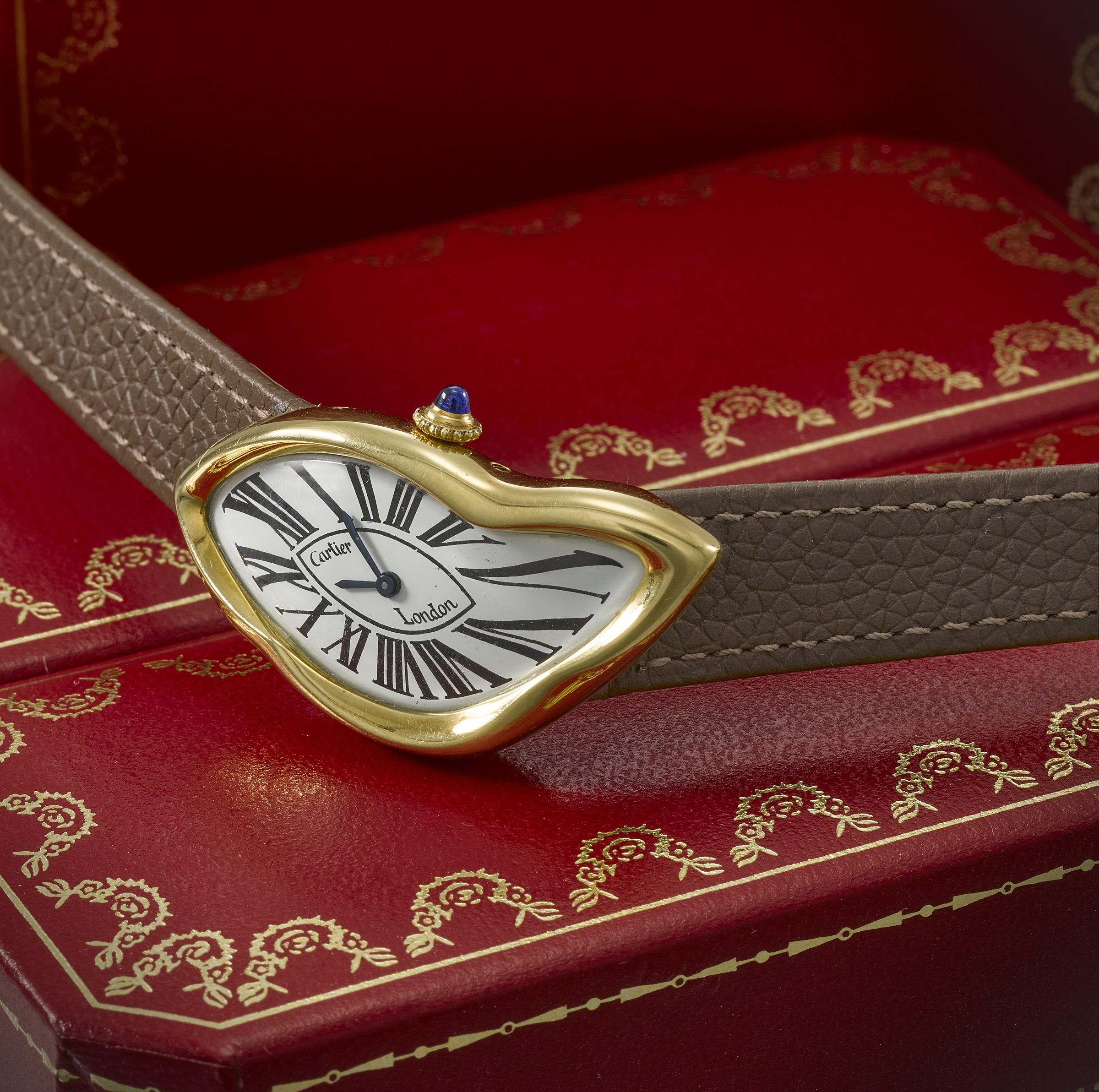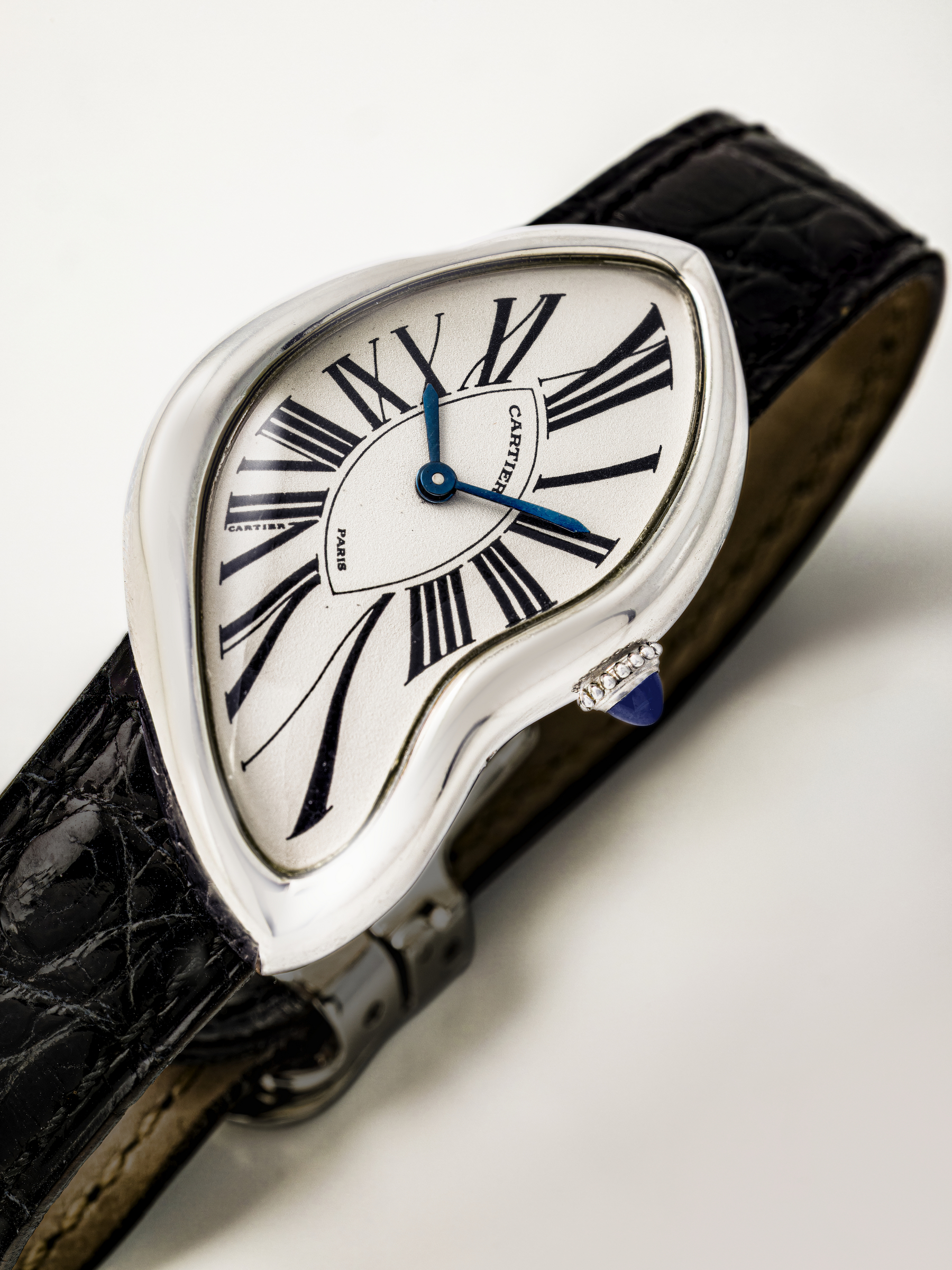Cartier Crash watch: the collector’s guide
Beloved by stars and coveted by collectors, the Cartier Crash watch blends celebrity cachet with extreme rarity — reflected in historic sales at Christie’s

Cartier, a supremely rare, unusual and highly coveted 18k gold asymetrical wristwatch with ‘Crash’ deployment clasp, signed Cartier, London, Crash model. Sold for $819,000 on 9 December 2024 at Christie’s in New York
A watch born from rebellion: the origins of the Cartier Crash
Few timepieces embody the spirit of defiance and artistic freedom quite like the Cartier Crash watch. Conceived in 1967 at Cartier’s boutique on Bond Street in London, the Crash emerged during an era defined by counterculture, psychedelia and boundary-pushing creativity. At a time when most watches adhered to rigid geometry and classic forms, the Crash threw symmetry out the window, introducing a ‘melted’ case shape unlike anything seen before.
While many believe the watch to have been inspired by Salvador Dalí’s The Persistence of Memory (1931) or a distorted timepiece damaged in an actual car crash, the real story is both more deliberate and more fascinating. According to Francesca Cartier Brickell, granddaughter of Jean-Jacques Cartier, the Crash was a collaboration between Jean-Jacques and designer Rupert Emmerson. Responding to their clients’ desire for a watch ‘unlike any other’, they sought to reinterpret the elegant Cartier Maxi Oval watch for the psychedelic age. By elongating, pinching, and curving the silhouette, they created a case that felt both fluid and rebellious.
Cartier, a supremely rare, unusul and highly coveted 18k gold asymetrical wristwatch with ‘Crash’ deployment clasp, signed Cartier, London, Crash model. Sold for $819,000 on 9 December 2024 at Christie’s in New York
Cartier, a highly desirable and rare 18k gold limited edition asymmetrical wristwatch with ‘Crash’ deployant clasp, c. 1991. Sold for $277,200 on 21 February 2024 in The Collection of Sir Elton John: Opening Night at Christie’s in New York
The first pieces, assembled in collaboration with Wright & Davies and Cartier London’s head watchmaker Eric Denton, were meticulously adjusted at every step, from dial painting to movement fitting. Only a handful were made in the 1960s, including one sold to actor Stewart Granger, who famously returned it a week later for being ‘too unusual’. Today, those early Crash watches bearing the London signature are amongst the rarest and most sought-after.
Crafted for the collector: rarity and legacy
The Cartier Crash is a statement of nonconformity. From the watch’s inception, production has been intentionally limited. The original London-made watches, featuring manual finishes and movements powered by Jaeger-LeCoultre’s calibre 841, remain the pinnacle for seasoned collectors. Their artisanal nature and historical context make them coveted additions to major collections.

Cartier, an exceptionally rare and attractive 18k gold asymetrical wristwatch with original ‘Crash’ deployment clasp, signed Cartier, London, ‘Crash’ model. Sold for CHF 819,000 on 9 May 2022 at Christie’s in Geneva
Cartier has released limited reissues over the decades: in 1991 with a Paris edition of 400 pieces, in 2013 with diamond-set models in white and rose gold, and in 2015 with the bold Crash Skeleton. Each variation remains low in volume, with some as scarce as one piece per month released during the reopening of Cartier’s Bond Street boutique in 2019.
Exclusivity is further heightened by cultural cachet. Celebrities such as Jay-Z, Timothée Chalamet, and Elton John have been seen wearing various iterations of the Crash, lending modern appeal to this already iconic design. With most examples remaining in family estates or private hands, public sales are rare and highly competitive — several vintage and reissue Cartier Crash models have achieved prices more than $1 million at auction.
Design with distinction: features that define the Crash
.jpg?mode=max)
Cartier, A special order and previously unknown 18k white gold asymmetrical wristwatch with ‘nickelé’ grey dial and ‘crash’ deployant clasp, Crash model, c. 2021. Sold for CHF 756,000 on 12 May 2025 at Christie’s in Geneva
Key features of the Cartier Crash include:
•Roman numerals, distorted to fit the undulating dial
•Blued or luminescent sword-shaped hands, a hallmark of Cartier craftsmanship
•Manual-winding mechanical movements, underscoring traditional horological values
•Diamond-set bezels in some models, offer opulence without compromising the original aesthetic
Importantly, the Crash defies tradition. Its size lends it a genderless quality as it wears equally well on men and women, balancing elegance with eccentricity. This unisex appeal further contributes to its timeless relevance.
Materials and variations: from gold to Skeleton
Over its lifespan, the Crash has evolved in materials and finishes while staying true to its roots. Originally crafted in yellow gold, early pieces channel a vintage warmth. The 1991 Paris edition differed by appearing sleeker and more precise rather than its artisanal senior. The 2013 reissues in white and rose gold, which added a modern touch, with additional diamond options enhancing their luxe appeal. In 2020, a yellow gold edition returned to the watch’s roots, pairing nostalgia with contemporary prestige.
Platinum variations, such as the 2018 model, offer sleek, cool refinement. White gold, particularly in the 2015 Skeleton edition, introduced a new level of transparency: with an open-worked dial powered by the calibre 9618 MC, the mechanics of time were made visible, amplifying the surreal theme.
.jpg?mode=max)
Cartier, a platinum and diamond set limited edition skeletonised asymetrical wristwatch, Crash model, c. 2015. Sold for HKD 1,764,000 on 24 May 2022 at Christie’s in Hong Kong
Additional innovations include enamel dials, sapphire cabochon crowns and high-polish or brushed metal bracelets. Cartier has also released versions with mother-of-pearl dials and diamond embellishments, reinforcing the Crash’s versatility across styles and generations.
Why collectors covet it: cultural impact and enduring allure
More than half a century after its debut, the Cartier Crash remains a cornerstone of collectable watchmaking. Its enduring desirability lies in a combination of rarity, design boldness and cultural significance. It reflects a particular moment in art, fashion and watch history. A product of 1960s London that continues to resonate with today’s collectors, it remains timeless.
Sell your Cartier watch with Christie’s
REQUEST ESTIMATE NOWEach Crash, whether vintage or modern, carries with it a piece of Cartier’s history and a defiance of norms. It is a conversation piece, a status symbol, and above all, a wearable work of art.
For collectors, the Crash promises a story of innovation, rebellion and timeless eccentricity that evolves with every wearer.

Cartier, An extremely rare platinum asymetrical wristwatch, Crash model. Sold for HKD 2,898,000 on 29 May 2025 at Christie’s in Hong Kong
A celebrity favourite: statement-making style
The Cartier Crash has made waves on celebrity wrists on the red carpet and off. Sofia Richie Grainge recently wore a gold Crash worth around $200,000-250,000 on the Therapuss podcast — TikTok users dubbed it “casually wearing a house on her wrist.”
High-profile endorsements span the spectrum: Jay-Z, Timothée Chalamet, Tom Brady, Tyler the Creator, LeBron James, Kim Kardashian and even Sebastian Stan, who wore a 1993 Crash at the Met Gala in 2024.
At the Prelude to the Paris 2024 Olympics, LeBron James wore a 2016 limited edition pink-gold Crash Skeleton which originally retailed for $55,000 and now commands up to $250,000.